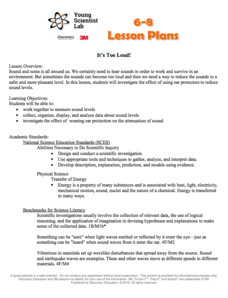Texas State Energy Conservation Office
Investigation: Automotive Emissions and the Greenhouse Effect
It is recommended that you conduct this fabulous experiment as a whole-class demonstration. Collect air samples from the environment, human exhalation, and car exhaust, then compare them for carbon dioxide content using bromthymol blue...
Institute of Electrical and Electronics Engineers
The Power of Graphene
To prepare for the activity, STEM classes read about nanotechnology and the amazing properties of graphene. They collect a graphene sample from pencils, and then connect them into simple circuits to determine whether it makes a better...
Teach Engineering
The Grid
Upper graders form a "Presidential Task Force," and attempt to make recommendations concerning the future of the national power grid. After a teacher-led discussion which proves that our nation's energy consumption will soon outpace our...
Curated OER
Diffusion through Membranes
Students identify diffusion and its processes through experimentation and calculations. They also use a CBL and conductivity probe to measure the conductivity of various solutions and study the effect of concentration gradients on the...
Curated OER
Waste Watchers
Energy-aware learners conduct an audit on their electricity usage by recording their electric meter reading and assessing the thermostat, light bulbs, windows, and water heaters in their homes. In class, they analyze results and discuss...
Curated OER
Identify the Homographs
To conduct an orchestra, a conductor’s conduct must be above reproach. What fun! Light a match under your readers by having them read a series of definitions and find the homograph that matches. If students don’t contest, you could...
Curated OER
Energy and Energy Conversion
Third graders investigate different energy conversions through hands-on activities. In this energy instructional activity, 3rd graders move through four stations and conduct experiments illustrating energy conversions. Wave energy,...
Discovery Education
It's Too Loud!
STEM scholars investigate sound attenuation by conducting an experiment in which they compare the farthest distance that they can hear a sound with and without ear protection.
Curated OER
Comparing Volumes
Students conduct experiments to discover the various ratios of oil to popcorn kernels. They determine which amount of oil produced the most popped kernels.
Curated OER
Losing Ground
Students examine the Dust Bowl and the effects of farming practices in the early 20th century. They read a handout, and conduct and discuss two experiments simulating soil erosion.
Curated OER
Fossil Fuels: Facing the Issues
Students explore energy by researching fuel usage on Earth. In this fossil fuel lesson, students define fossil fuels, the energy created by burning them, and the impact on the environment when using them. Students conduct pollution...
Curated OER
Make a Sundial
Students explore space science by conducting a sun experiment in class. In this time telling lesson plan, students discuss how the sun sits in our sky at exact times each day and how astronomy is based on our perspective of the solar...
Curated OER
Grass as Biomass
Students explore energy properties by listening to a sustainability lecture in class. In this biomass lesson, students identify what biomass is, how it can be transformed into a usable energy and how it complements the energy cycle....
Curated OER
Switcheroo
Students construct a simple switch and determine what objects and what types of materials can be used to close a switch in a circuit and light a light bulb.
Curated OER
V, R, and I in Parallel Circuit
In this V, R, and I in parallel circuits worksheet, students calculate the total current, total voltage, and total resistance. Kids match the correct term with the correct definition. Students also label several diagrams of series and...
Curated OER
Current Thinking About Magnets
Students construct their own magnet and wire device. In this inquiry lesson, students investigate the factors affecting the strength of magnetic forces. They manipulate different variable to determine their effect.
Curated OER
Introduction to Elementary Circuits
Students explore how a circuit works and create a circuit to use energy from a battery to light a bulb. In this introduction to circuits lesson, the students study the parts of a circuit and have a class discussion of what would happen...
Curated OER
Elements, Compounds, and Mixtures
In this elements, compounds, and mixtures worksheet, learners answer questions about the properties of elements, mixtures, and compounds. Students identify the physical changes that is made to a substance to determine if it is an element.
Curated OER
Solutions Quiz Review Sheet
In this solutions worksheet, students use a phase diagram to determine the boiling point and molality of the solution. Students determine the electrical conductivity of a saturated solution. This worksheet has nine problems to solve.
Curated OER
Electrical Circuits And Switches
Students design and draw circuits with batteries, small light bulbs and common household conductors. They build and test the circuit then modify it so someone who couldn't use their hands could turn the circuit on and off.
Curated OER
Electrolytic Titration
Middle schoolers observe an electrolytic titration using a conductivity tester. In this titration lesson, students observe a solution of acid conducting electricity using the conductivity apparatus. They observe the acid solution being...
Curated OER
Daniell Cell
Students explain how Daniell cells work. In this electrochemistry lesson, students conduct a variety of experiments to explore the different types of cells. They create a model of Daniell cell.
Curated OER
Magnetic Levitation
Students conduct a series of experiments on magnetic levitation. In this physics lesson, students discover how Maglev trains operate. They explain how magnetism make even simple objects levitate.
Curated OER
Magnetorheological Fluids
Young scholars conduct a series of experiments on magnetorheological fluids. In this physics lesson, students explain how these fluids behave in varying magnetic field strength. They give practical applications of magnetorheological fluids.

























